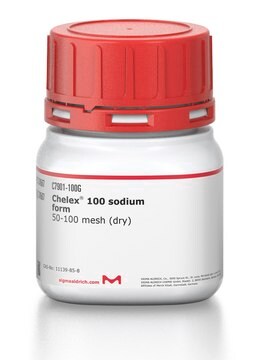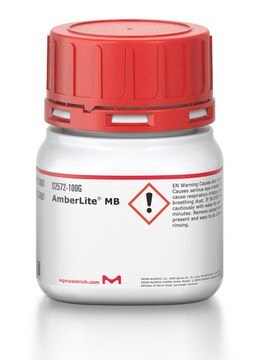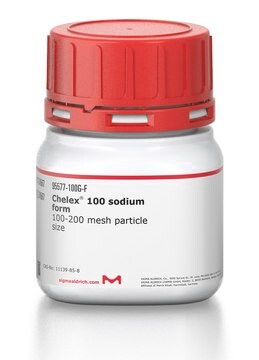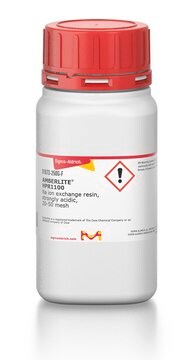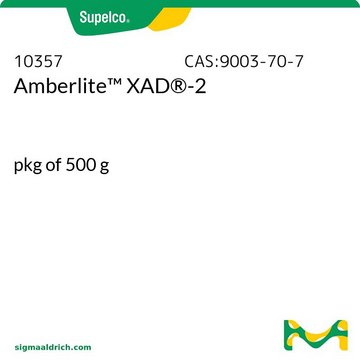62107
Lewatit® MonoPlus TP 214 Ion Exchange Resin
macroporous, 30-35 mesh
About This Item
Productos recomendados
Nombre del producto
Lewatit® MonoPlus TP 214, ion exchange resin, macroporous
Quality Level
form
macroporous
moisture
43-48%
technique(s)
LPLC: suitable
loss
40-60% loss on drying, 110 °C
matrix
styrene-divinylbenzene (macroporous)
matrix active group
thiourea functional group
particle size
400-1250 μm
capacity
1.0 meq/mL by wetted bed volume
separation technique
affinity
General description
Application
Legal Information
Storage Class
11 - Combustible Solids
wgk_germany
WGK 3
flash_point_f
Not applicable
flash_point_c
Not applicable
ppe
Eyeshields, Gloves, type N95 (US)
Elija entre una de las versiones más recientes:
Certificados de análisis (COA)
¿No ve la versión correcta?
Si necesita una versión concreta, puede buscar un certificado específico por el número de lote.
¿Ya tiene este producto?
Encuentre la documentación para los productos que ha comprado recientemente en la Biblioteca de documentos.
Nuestro equipo de científicos tiene experiencia en todas las áreas de investigación: Ciencias de la vida, Ciencia de los materiales, Síntesis química, Cromatografía, Analítica y muchas otras.
Póngase en contacto con el Servicio técnico

